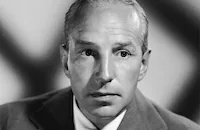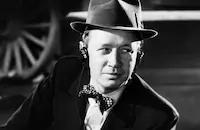Guadalcanal Diary
Brief Synopsis
Cast & Crew
Lewis Seiler
Preston Foster
Lloyd Nolan
William Bendix
Richard Conte
Anthony Quinn
Film Details
Technical Specs

Synopsis
On 26 Jul 1942, a transport ship carrying a large group of Marines sails through the South Pacific. The men, unaware of their destination, make the most of their brief rest period by singing, reading and writing letters and shooting the breeze with the war correspondent traveling with them. The men include Col. Grayson, Capt. Jim Cross, Capt. Davis, Sgt. Hook Malone, Corp. Alyosious "Taxi" Potts, Jesus "Soose" Alvarez, Father Donnelly and Pvt. Johnny Anderson, who has been nicknamed "Chicken" because of his youth and inexperience. Grayson soon learns that they are bound for Guadalcanal in the Solomon Islands, and that other transports are carrying Marines to nearby Tulagi. Cross and Davis plan the landing of the first two companies, while Donnelly goes below to encourage the men. On 7 Aug 1942, the Marines land on Guadalcanal and are surprised by the initial lack of resistance from the Japanese forces. The Marines on Tulagi are immediately attacked, while on Guadalcanal, the wary soldiers secure the airfield, make camp and are on the lookout for the enemy. Snipers make their presence felt as lone soldiers are killed, and tension rapidly mounts as the Marines grow restless to fight an enemy they cannot see. After Davis is stricken with fever, Cross leads a patrol to investigate a local's claim that a small Japanese force is ready to surrender at the nearby village of Matanikau. Lt. Thurmond and Soose are among the men in the patrol, which is attacked in the water by a Japanese submarine and then is fired upon by nests of machine guns once the survivors land on the beach. The men dig into the beach but soon are picked off by the enemy until only Soose is left. He manages to escape and swim back to the main camp, where Grayson vows to return in force. The main force does attack Matanikau, and despite heavy losses, prevails against the enemy. Later, as time passes, the troops become hardened by the battles, the constant fear of snipers and aerial bombardment, limited supplies and extreme conditions. Even Johnny seems to be aging in front of his comrades' eyes when he finds his first whisker. The soldiers' activities are divided between patrolling for snipers and engaging in minor battles, and falling out to bomb shelters during aerial attacks. Weary of the long, nerve-wracking barrages, Taxi tells his comrades: "I don't mind the one with my name on it. It's the one addressed to whom-it-may-concern, I don't like." As the weeks pass, Henderson airfield is shored up and more planes, supplies and reinforcements arrive. On 10 Nov 1942, the 167th anniversary of the Marine Corps, three battalions of Marines, under the supervison of Grayson and Gen. Vandegrift, make a major push to eliminate the Japanese forces. Soose is killed during the battle, but Johnny shoots three of his attackers. The Marines are victorious and on 10 Dec 1942, as they leave camp, the Marines exchange jokes with the Army soldiers who are relieving them.

Director
Lewis Seiler
Cast

Preston Foster

Lloyd Nolan

William Bendix

Richard Conte

Anthony Quinn
Richard Jaeckel

Roy Roberts

Minor Watson
Ralph Byrd

Lionel Stander
Reed Hadley

John Archer

Eddie Acuff
Harry Carter
Robert Rose
Jack Luden
Louis Hart
Tom Dawson

Miles Mander
Selmer Jackson
Warren Ashe
Walter Fenner
Larry Thompson
David Peters
Martin Black
Charles Lang
George Holmes
Robert Ford
Russell Hoyt
Pvt. George G. Gray
Maj. R. E. Galer
Maj. Marion E. Carl
Sgt. David J. Maundrell
James Engler
Allen Jung
Paul Fung
Crew
Fred Allen
Islin Auster
James Basevi
David Buttolph
Jerry Cady
Charles [g.] Clarke
William Dillon
Bryan Foy
Leland Fuller
William Goetz
Lorin Grignon
Thomas Hastings
Dr. Brewster M. Higley
Jimmy Hughes
Lt. James W. Hurlbut U.s.m.c.r.
Daniel E. Kelly
Frank Lake
H. M. Leonard
Thomas Little
Capt. W. A. Maguire
Peverell Marley
Capt. Clarence Martin U.s.m.c. (ret.)
Emil Newman
Fred J. Rode
Fred Sersen
Al Stillman
Harry Von Tilzer
James Tinling
Augustus Montague Toplady
Lamar Trotti
Henry Weinberger

Film Details
Technical Specs

Quotes
Trivia
Notes
Before the film's main title card, a written prologue states, "Appreciation is gratefully acknowledged to the United States Marine Corps and to the Army, the Navy and the Coast Guard whose assistance and participation made this picture possible." Throughout the film, voice-over narration by Reed Hadley as the war correspondent describes the action and gives important dates. The film is based on the best-selling diary of war correspondent Richard Tregaskis, who accompanied the first detachment of Marines to land on Guadalcanal in the Solomon Islands on August 7, 1942. The critical engagement at Guadalcanal was the United States' first victorious offensive action in the South Pacific. According to studio publicity, technical advisor Lt. James W. Hurlbut, who was a war correspondent for the Marine Corps, was at Guadalcanal with Tregaskis. A December 1942 Hollywood Reporter news item noted that "several other companies were in the bidding" for the rights to Tregaskis' book. According to an August 1943 New York Times article, when the studio requested cooperation from the Marine Corps, "one of the first demands was for a rewrite of the script along more accurate lines. Now...the film will follow the book faithfully, departing from it only by centering the story around a single unit of Marines instead of treating the entire action of the campaign in a generalized manner."
The file for Guadalcanal Diary in the Twentieth Century-Fox Produced Scripts Collection, located at the UCLA Arts-Special Collections Library, contains an original story entitled "Marines in the Pacific," submitted to the studio by George Bricker and Herman Ruby. Their work, as well as that of their later collaborator, Leonard Hoffman, does not appear to have been included in the finished film, however. Kenneth Gamet and Waldo Salt worked on versions of the screenplay, according to the studio records, but the extent of their contribution to the completed picture has not been determined. The studio records reveal that technical advisor Capt. Clarence Martin fought at Guadalcanal with the first detachment of Marines.
A April 2, 1943 studio press release announced that Victor McLaglen would play "Father Donnelly" and Preston Foster would play "Capt. Cross." According to a June 15, 1943 Hollywood Reporter news item, however, McLaglen was scheduled to play "Col. Grayson" and was replaced by Minor Watson. No reason for McLaglen's replacement was announced. A May 4, 1943 Hollywood Reporter news item reported that Herbert Evers would make his screen debut in the picture, but his appearance in the released film has not been confirmed. An August 1943 publicity release included George Lynn and Paul Marion in the cast, although their appearance in the completed film has not been confirmed. The same release included Robert Mitchum and Hugh Beaumont in the cast but they could not be identified in the viewed print.
According to the August 1943 studio press release, Anthony Quinn was cast as "Soose Alvarez" after "it was suggested to the producers from an important quarter that it would help the popularity of the United States in Latin American countries if Hollywood would curtail the practices of putting Latins in 'heavy' roles. Furthermore, Quinn greatly resembles Sgt. Frank Few, an Arizona Indian who was one of the great Guadalcanal heroes." The press release further noted that Eddie Acuff's character, "Tex," was based on Gunnery Sgt. Charles E. Angus, a famous Marine rifleman whose marksmanship became part "of the Guadalcanal legend."
Contemporary sources noted that the majority of the film was shot on location at Camp Pendleton, near Oceanside, CA. Many of the Marines stationed there were filmed while on maneuvers and a substantial number appeared in the picture in small speaking parts or as extras. Although a June 24, 1943 Hollywood Reporter news item noted that the studio had obtained waivers from Lloyd Nolan, Preston Foster and William Bendix in order to give only the Marines starring credit in a title card that would read "The United States Marines in Guadalcanal Diary," the Marines did not receive an onscreen credit. Studio publicty noted that the picture was shot for one week aboard a Navy transport. The Hollywood Reporter review related that the demands of Marine Corps officials for authenticity "were met so fully by Hollywood that the re-enacted picture has been added to the official Marine archives in Washington."
According to Hollywood Reporter news items, on November 10, 1943, the film received premieres in Philadelphia, to celebrate the 168th anniversary of the formation of the Marine Corps, and in Hollywood. The Hollywood premiere, which was a benefit for War Charities, was attended by "top-ranking officers of the Marines, Army and Navy," as well as "about fifty war heroes." The sixty-piece Pendleton Field Marine Band played at the event.
The picture marked the screen debuts of stage actor Robert Rose and Richard Jaeckel, who, according to contemporary sources, was a studio messenger boy when he was cast in the production. The film also marked the first time that actor Richard Conte was billed as "Richard." He had previously appeared as Nicholas Conte in the 1939 Twentieth Century-Fox picture Heaven with a Barbed Wire Fence.
On February 28, 1944, Foster, Bendix, Nolan and Jaeckel reprised their roles for the Lux Radio Theatre presentation of Guadalcanal Diary. In a 1946 Saturday Evening Post "The Role I Liked Best" column, William Bendix stated that "Corp. Taxi Potts" was his favorite role because it gave him "the widest range of opportunity" to act. Bendix also related that he and the other actors enjoyed the opportunity to work with the Marines stationed at Camp Pendleton, and that he was touched by the grateful letters he received from servicemen who appreciated his realistic portrayal of a soldier under fire. According to a August 28, 1945 Daily Variety news item, the studio was sued by Donald Peterson for injuries he received during filming. Peterson alleged that he suffered broken ear drums from a premature dynamite explosion and was awarded $15,000 in a jury trial. The studio appealed the decision, however, and the ultimate disposition of the case has not been determined.

Miscellaneous Notes
Released in United States 1943
Released in USA on video.
Released in United States 1943











